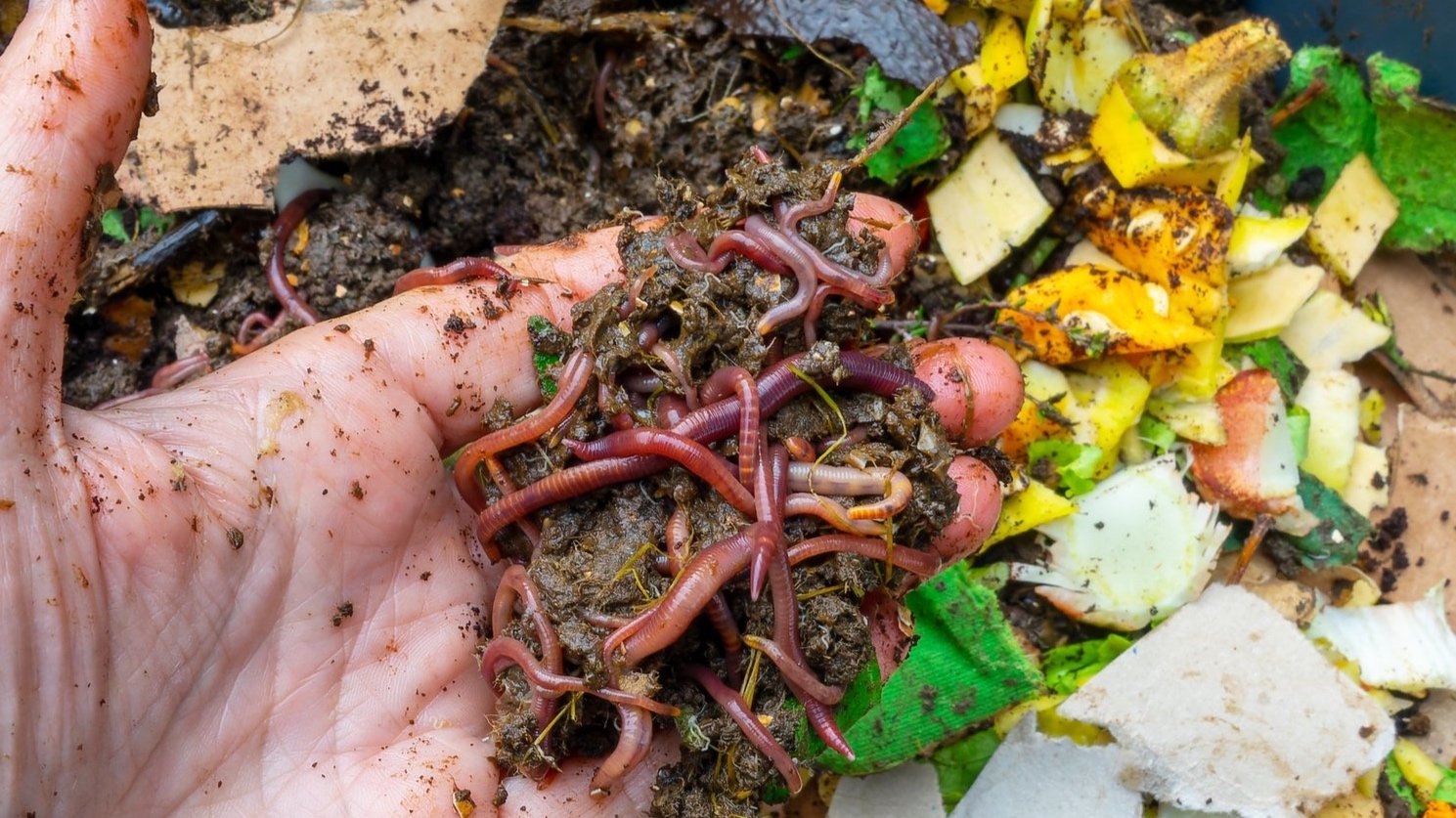The Ultimate Red Wiggler Composting Checklist for Successful Vermiculture
The Ultimate Red Wiggler Composting Checklist for Successful Vermiculture
Blog Article
Understanding the Advantages of Red Wiggler Composting: Exactly How This Efficient Method Transforms Organic Waste Into Nutrient-Rich Soil Changes
Red Wiggler composting, employing the types Eisenia fetida, presents a compelling approach to natural waste management, transforming cooking area scraps and lawn debris into beneficial dirt changes. This technique not just boosts dirt fertility however additionally addresses pressing environmental worries, consisting of land fill waste decrease and greenhouse gas exhausts. As we discover the details of this process, the diverse benefits it supplies may reveal unforeseen understandings into sustainable practices and eco-friendly equilibrium. Recognizing these measurements may prompt a reevaluation of exactly how we regard waste and its possible payments to a healthier world.
What Are Red Wigglers?
Red wigglers, scientifically referred to as Eisenia fetida, are a varieties of earthworm that play a crucial role in vermicomposting systems. These worms are characterized by their reddish-brown shade, segmented bodies, and a distinctive capability to prosper in organic-rich atmospheres, making them suitable for composting applications - Red Wiggler Composting. Unlike their garden-dwelling equivalents, red wigglers choose to inhabit the top layers of dirt, where decomposing issue is abundant
Commonly measuring in between 3 to 4 inches in size, red wigglers have a high reproductive price, enabling them to multiply quickly under ideal conditions. They have a special digestive system that enables them to refine organic waste effectively, transforming it right into nutrient-rich spreadings, which are highly beneficial for plant growth.
Their resistance to differing wetness levels and temperature varies better improves their utility in vermicomposting arrangements, making them a popular choice amongst composting lovers. In addition, red wigglers are cardio organisms, which requires a well-aerated composting atmosphere, making certain reliable disintegration. Recognizing the biological characteristics and habits of red wigglers is crucial for enhancing their usage in sustainable waste administration methods.

Benefits of Vermicomposting
Harnessing the power of vermicomposting deals a plethora of farming and ecological advantages. First of all, it dramatically decreases organic waste in landfills, thereby decreasing methane emissions, a powerful greenhouse gas. By diverting food scraps and lawn waste to vermicomposting, we support an even more sustainable waste administration system.
Additionally, vermicomposting boosts soil health. The spreadings generated by red wigglers are rich in important nutrients, microbes, and enzymes, boosting soil framework and fertility. This nutrient-rich change promotes robust plant growth and increases water retention, lowering the demand for chemical fertilizers.
In addition, vermicomposting fosters biodiversity in the dirt community. The introduction of beneficial microbes from worm castings help in disease reductions and nutrient biking, developing a healthier environment for plants.
Financially, vermicomposting minimizes the expenses connected with chemical inputs and garbage disposal. Farmers and gardeners can grow top quality produce at reduced expenditures, adding to food safety and security and sustainability.
Exactly How to Beginning Composting
Beginning a composting endeavor can be a fulfilling and simple process. To begin, pick an appropriate location that is well-drained and gets partial sunlight. This will help preserve a well balanced temperature, critical for the composting procedure. Next, select a garden compost bin or produce a marked area in your yard, guaranteeing it is quickly available for harvesting and adding products compost.
Collect organic materials such as kitchen area scraps, yard waste, and shredded paper. Aim for a well balanced mix of 'environment-friendly' materials, high in nitrogen (e.g., fruit scraps, coffee premises), and 'brownish' materials, abundant in carbon (e.g., dried out fallen leaves, cardboard) A ratio of about 2:1 environment-friendly to brown materials is optimal.
Start layering your materials, ensuring ample air blood circulation by turning the stack on a regular basis. This advertises cardio decay, decreasing smells and speeding up the process. Monitor dampness degrees; the compost needs to seem like a damp sponge however not extremely damp.
Nutrient Account of Vermicompost
Composting, especially with red wigglers, generates a nutrient-rich product understood as vermicompost. Additionally, it provides micronutrients like iron, magnesium, and calcium, fostering durable plant development and enhancing soil wellness.
The microbial task existing in vermicompost additionally enriches its account, introducing advantageous bacteria and fungi that advertise nutrition availability and uptake in plants. This biological component aids in subduing plant diseases and enhancing dirt structure, causing enhanced water retention and oygenation.

Environmental Effect of Composting
The ecological impact of composting, especially via the usage of red wigglers, is diverse and profound. This approach significantly reduces the quantity of natural waste sent to garbage dumps, which in turn decreases greenhouse gas discharges, especially methane-- a powerful factor to environment change. By drawing away natural materials from landfills, red wiggler composting not only assists alleviate ecological destruction yet click to investigate likewise promotes lasting waste management techniques.

Additionally, composting adds to carbon sequestration, as the procedure records co2 from the atmosphere and shops it in the soil. This all-natural procedure aids in combating environment modification while improving the soil - Red Wiggler Composting. On the whole, red wiggler composting offers a feasible, eco-friendly service for waste administration and environmental sustainability, advertising healthier ecosystems and an extra sustainable future
Verdict
In final thought, Red Wiggler composting offers as an efficient method for transforming natural waste right into beneficial soil modifications. The process not only enhances dirt fertility and structure but likewise reduces environmental problems linked with waste disposal.
Red Wiggler composting, using the varieties Eisenia fetida, click here to read presents a compelling method to natural waste monitoring, transforming kitchen scraps and backyard particles right into valuable dirt changes. Unlike their garden-dwelling counterparts, red wigglers favor to inhabit the upper layers of soil, where rotting matter is plentiful.
The spreadings produced by red wigglers are abundant in crucial nutrients, microbes, and enzymes, boosting dirt structure and fertility. The nutrient-rich byproducts of red why not try here wiggler activity boost dirt framework, boost water retention, and advertise biodiversity within the soil community.In conclusion, Red Wiggler composting serves as an effective approach for converting natural waste into valuable dirt changes.
Report this page